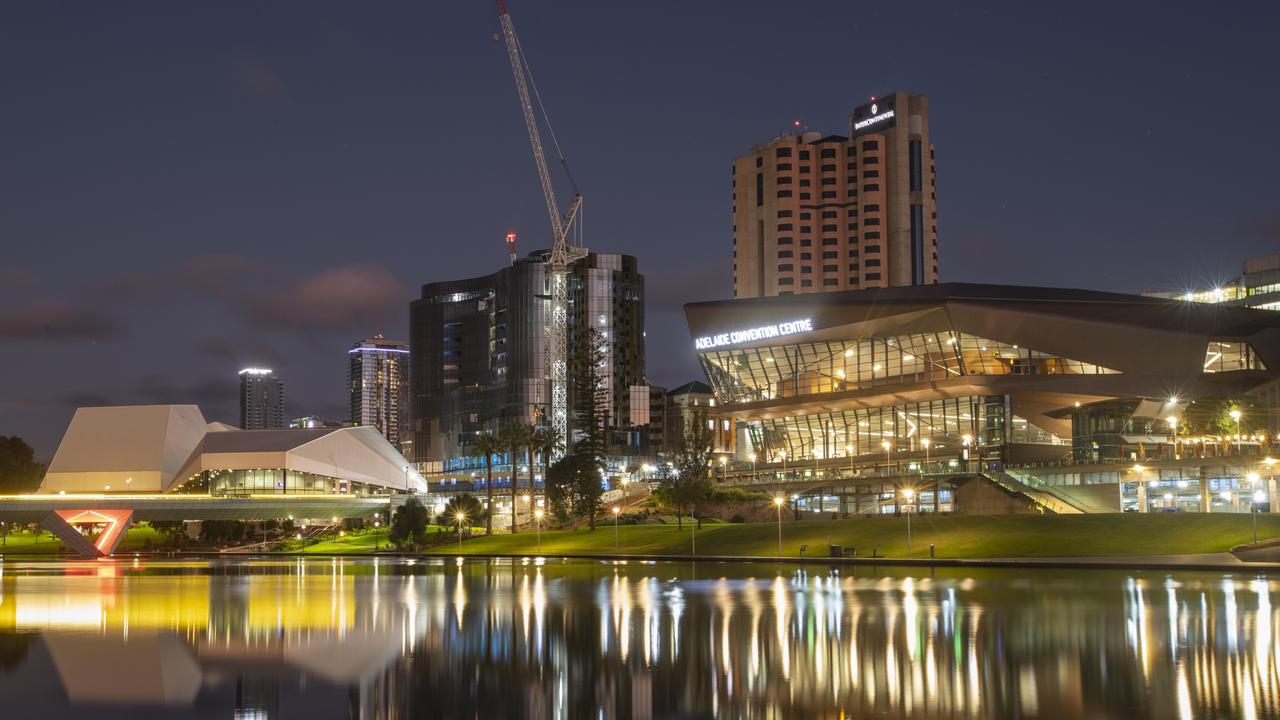South Australian business leaders: it’s time to see the policy light
ONE year out from the state election, The Advertiser talked to South Australia’s leading industry organisations about what their policy wishes were.

SA Business
Don't miss out on the headlines from SA Business. Followed categories will be added to My News.
THE importance of energy security, stability and affordability isn’t lost on anyone.
The issue has dominated discussion since the September 28 statewide blackout and yesterday, Premier Jay Weatherill dedicated all of his 12 minute speech at the SA Leaders Lunch, hosted by the Property Council and Business SA, to the topic.
He said it will be the “defining issue” of the 2018 state election — to be held in one year’s time.
“We can be the energy superpower in a low carbon economy,” the Premier proclaimed, following his $550 million policy plan launch earlier in the week.
And while SA’s leading industry organisations agree that it’s a critical issue, SA Property Council boss and co-host of yesterday’s lunch, Daniel Gannon, wants to remind the electorate that “energy isn’t the only game in town”.

Tax reform, predominantly land tax and fast-tracking the abolition of stamp duty, population growth and infrastructure are the Property Council’s top policy wishes.
“SA cannot be polite about this anymore — we need population growth and we need it now to future-proof the state’s economy and create jobs for forthcoming generations,” Mr Gannon says.
Regarding infrastructure, Mr Gannon — formerly media adviser to Opposition Leader Steven Marshall — says policymakers should familiarise themselves with the Property Council’s “City Deals” policy.
“City Deals offer government a unique opportunity to deliver infrastructure that the community needs by partnering with all levels of government to deliver tailored infrastructure outcomes,” he says.
Fellow industry groups Business SA, Master Builders, SA Chamber of Mines and Energy, and the Civil Contractors Federation all agree that job-creating infrastructure projects should be a priority for all parties.
Business SA’s Anthony Penney says his organisation is pushing for the establishment of a state infrastructure fund. This would see 50 per cent of future budget surpluses spent on priority infrastructure projects.
“Particularly the Northern Adelaide Irrigation Scheme, which has strong potential to create much-needed sustainable jobs,” Mr Penney says. “This project will also leverage from the Northern Connector which is under construction.”
Master Builders SA chief executive Ian Markos is proposing a “5x5x5” policy — the identification of five projects for $5 million seed funding over the next five years.
He says this will identify and use manufacturing skills to build a homegrown prefabrication industry that welcomes high-order design and manufacturing in the construction industry.
“Long-term growth demands an outward-looking focus and a wave of innovation,” he says.
“Our members employ more than 56,000 people directly and five times that indirectly — we want the next government to commit to a road-map that will show a path to export earnings and a smart and complex intellectual industry rather than risk losing 10,000 jobs over the next 10 years. 5x5x5 will do that.”
Clearing SA’s road maintenance backlog, estimated at around $1 billion, is the top policy wish of the Civil Contractors Federation.
Chief executive Phil Sutherland says while a few cracks and potholes may not seem like the makings of a budget crisis, delaying repairs will result in a heftier bill in the future.
“In a state with high unemployment and a slow economy, we should take note that investing in road maintenance is a proven job creator and the demand for road maintenance materials triggers the economic multiplier effect delivering benefits beyond the project,” he says.

SACOME boss Rebecca Knol agrees with Mr Sutherland’s proposal to step up investment in regional road and rail freight corridors, particularly around Port Augusta.
“Improving access to the Gawler Craton and Cooper Basin and addressing the Port Augusta
bottleneck will bring productivity benefits for our sector and the state as a whole,” Ms Knol says.
“Specifically we hope to see policy that will deliver the road and rail bypass at Port Augusta, intermodal facilities connected to the bypass and an upgrade of the Strzelecki Track.
“Queensland has sealed roads to the SA border, and this provides Queensland suppliers with a
distinct advantage in servicing activities in our north.
“SA needs to address this imbalance and provide our businesses with an equal opportunity to compete.”
luke.griffiths@news.com.au



